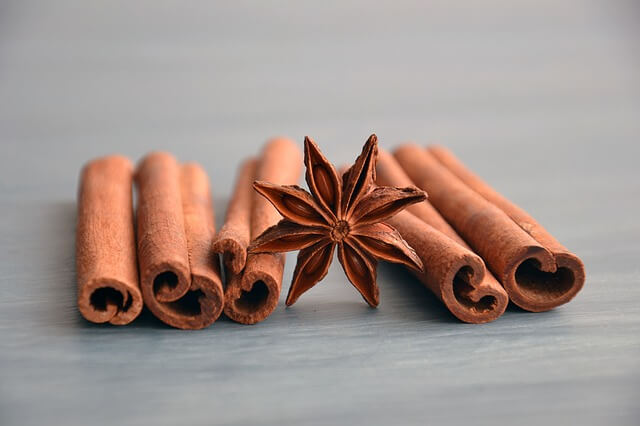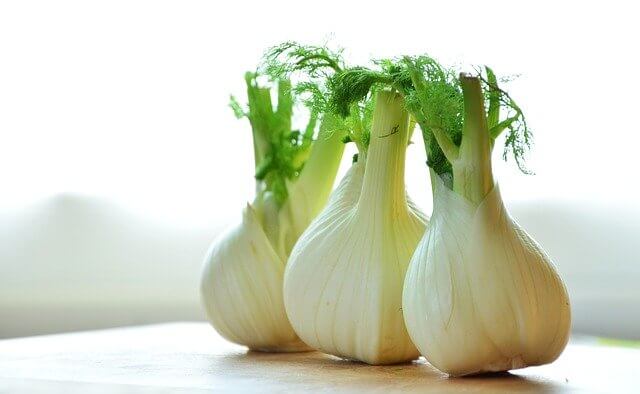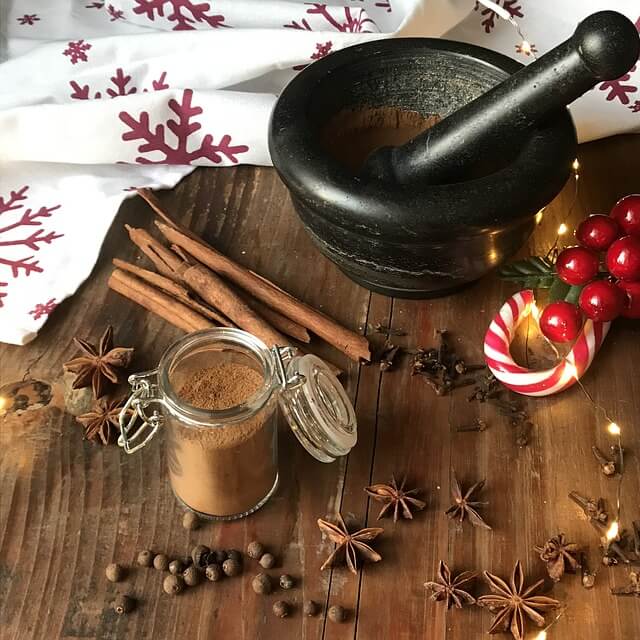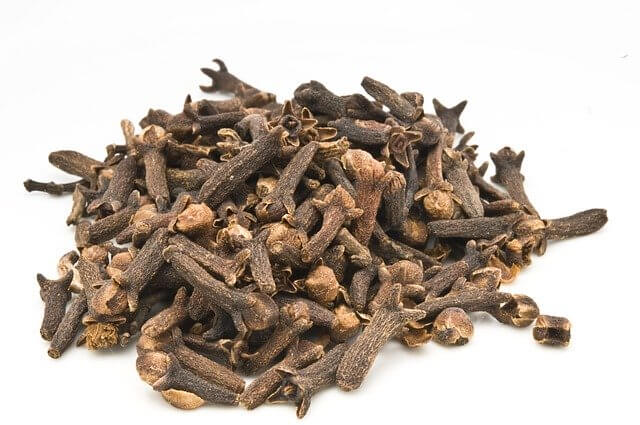While star anise looks so appealing that you might think it was used for décor, it’s actually a common spice used in certain baked goods and savory dishes made in the kitchen. If you are in the market for a star anise substitute, many can offer the same texture and flavor, while others provide a higher level of convenience in cooking.
This article will share 5 of the best substitutes you can use if you don’t have access to star anise or you are in the mood to try something completely new.
What is star anise?

Many people are under the impression that common anise and star anise are the same thing, but nothing could be farther from the truth. Star anise comes from an evergreen tree and starts life as a green fruit.
Individuals pick it off the tree, which allows it to ripen before drying. Once the process is complete, it looks like a brown, hard seed. There are about six to 10 points on each star, and each one of them has a single seed.
How healthy (or unhealthy) is it?
Star anise is a versatile spice that offers several health benefits for those who consume it. The largest one is the inclusion of various antioxidants, which can help keep your body healthy.
It is also a spice that has anti-inflammatory properties that increase the healthiness of the spice. It is also capable of improving digestion, reducing nausea, and alleviating cramps. All in all, this is a healthy spice that can ensure your body is running at its best.
Nutritional Breakdown
Star anise |
Amount (per 100 g) |
% Recommended daily intake |
Calories |
415 kcal |
20% |
Total fat |
16 g |
26% |
Saturated fat |
0.5 g |
4% |
Cholesterol |
0 g |
0% |
Protein |
18 g |
35% |
Carbohydrates |
50 g |
18% |
Salt |
16 mg |
1% |
Vitamin A |
0 ug |
0% |
Vitamin D |
0 ug |
0% |
Vitamin E |
0 ug |
0% |
(Based on nutritional information from CalorieKing.)
What recipes are star anise used in?
There are a wide selection of recipes that can be improved by using the beautiful star anise spice. Some of the most popular dishes that incorporate the spice include poultry and beef stews, homemade sauces, and mulled wines, beer, and cider. When ground or grated, star anise also adds an exciting flavor to desserts like brownies, gingerbread, and chocolate cake.
Why do we need star anise substitutes?
There are many reasons that people choose a star anise substitute rather than using the actual spice during cooking. One of the most significant reasons is that it tends to be relatively expensive, so those on a budget may want to switch to a more affordable option.
It also can be hard to find at local markets, while substitutes on this list can be easier to find and purchase. Star anise substitutes can also be useful if you run out of the spice and want a quick alternative to finish cooking or baking something.
Note:
🌱 = vegan
1. Common anise🌱
Best for: baked goods, including pies and cookies, as well as flavoring hot drinks.

As we mentioned earlier in the article, star anise is not the same thing as common anise. However, each of them offer an intense licorice flavor to your favorite dishes. Natural anise has a milder flavor than star anise, which may be a perk for those who aren’t the biggest fans of licorice.
With that in mind, when you substitute common anise for star anise, you will want to use about twice the amount of common anise to get the same effect.
Advantages
Traditional anise has several health benefits that may make it worth choosing over star anise. One of the things it has large amounts of is iron, which helps produce blood cells in the human body. It also has low calories, a small amount of protein, and a bit of fiber.
Anise also offers manganese, magnesium, calcium, potassium, and more. Consuming common anise has also been shown to help balance blood sugar levels in people with diabetes.
Disadvantages
In most cases, there are few side effects people will experience using common anise. However, some people may experience allergic reactions, especially those who are allergic to ingredients like celery, dill, parsley, or fennel.
This spice also mimics estrogen and can worsen the symptoms related to hormonal conditions, such as endometriosis and breast cancer. However, most people who use anise will not experience these kinds of issues, especially in the small amounts used for cooking and baking.
Nutritional breakdown
Common anise |
Amount (per 100 g) |
% Recommended daily intake |
Calories |
10 g |
0.5% |
Total fat |
16 g |
26% |
Saturated fat |
0.6 g |
5% |
Cholesterol |
0 mg |
0% |
Salt |
16 mg |
0.8% |
Protein |
18 g |
35% |
Calcium |
646 mg |
65% |
Iron |
37 mg |
264% |
Potassium |
1441 mg |
35% |
Vitamin A |
311 ug |
39% |
(Based on nutritional information from USDA.)
2. Chinese five-spice🌱
Best for: marinades, dry rubs, vegetables, breading, and baked goods.

The first thing to be aware of with Chinese five-spice is that it is composed of clove, star anise, fennel, cassia, and Szechuan peppercorns. Since star anise has a substantial profile in this spice blend, it works out excellently as a substitute for only star anise.
It is, however, essential to keep in mind that the addition of the other spices means it will create a dish with a different flavor profile. This can be a positive thing with some recipes, while it might make other dishes taste a bit different than expected.
Advantages
While it might seem using a spice blend would ruin the star anise flavor you get with the single spice, that isn’t true. It’s the most potent spice in the mixture so most of the flavor you get is star anise.
The other ingredients are more in the background and added to complement the star anise, not change it. If you choose to use five spice instead of star anise, you will want to use about one and a half times the amount of star anise indicated in the recipe.
Disadvantages
While flavor can be listed as an advantage, it can also be a disadvantage if all the spices in the blend don’t complement the dish you are preparing.
This spice also has very little nutritional value in terms of calories, protein, and vitamins, so it doesn’t add much to your nutrition over a daily basis.
Nutritional breakdown
Chinese five-spice |
Amount (per 100 g) |
% Recommended daily intake |
Calories |
308 kcal |
15% |
Total fat |
11 g |
18% |
Saturated fat |
2 g |
15% |
Cholesterol |
0 mg |
0% |
Protein |
9 g |
18% |
Carbohydrates |
66 g |
25% |
Salt |
76 mg |
4% |
Vitamin A |
0 ug |
0% |
Vitamin D |
0 ug |
0% |
Vitamin E |
0 ug |
0% |
(Based on nutritional information from CalorieKing.)
3. Fennel seeds🌱
Best for: sauces, soups, fish dishes, curries, and condiments.

One of the other spices that works well as a star anise substitute is fennel seeds. Like star anise, common anise, and five-spice, it has a licorice flavor that can add a bit of zest to your cooking.
It also has more sweetness than star anise but adding in common anise can cut down on that if you prefer a more traditional flavor. Both spices are weaker than star anise, so you will need to use a more substantial amount when substituting.
As with common anise, use about one and a half times the amount of star anise listed in your recipe for the best taste.
Advantages
Fennel may not be used as commonly as things like cinnamon or pepper flakes; it’s a great option to have in your pantry. It has a licorice flavor similar to star anise and is highly aromatic to ensure your meals smell great.
This spice is low calorie and comes with a small amount of fat, protein, and digestible carbs. Fennel seed also offers many minerals such as iron, zinc, calcium, and magnesium to keep you healthy.
Disadvantages
There are not many disadvantages of using fennel seeds as long as you are not allergic to them. It can cause digestive problems if you are moving from a low fiber to a high fiber diet, but that’s true with many ingredients. In rare cases, those with allergies will experience skin reactions, in which case a different star anise substitute should be chosen.
Nutritional Breakdown
Fennel |
Amount (per 100 g) |
% Recommended daily intake |
Calories |
345 kcal |
12% |
Total fat |
15 g |
18% |
Saturated fat |
0.5 g |
3% |
Cholesterol |
0 mg |
0% |
Protein |
16 g |
31% |
Carbohydrates |
52 g |
19% |
Salt |
88 mg |
5% |
Vitamin A |
7 ug |
1% |
Calcium |
1196 mg |
120% |
Potassium |
1694 mg |
41% |
4. Allspice🌱
Best for: sweet beverages, gingerbread, roasted vegetables, and soups.

Allspice is another option available to use instead of star anise, and it will appeal to those who aren’t fans of licorice since that flavor profile isn’t present. What it does offer to your dishes is an exotic flair and an intense sweetness that can fit many dishes that request star anise instead.
Adding in a bit of sugar to the allspice can also create a flavor that is closer to star anise. Allspice is made of dried berries from a plant and may make you think of nutmeg, cloves, pepper, and cinnamon.
Advantages
This spice has several medical compounds that can ensure a healthy body. Some of them include eugenol, gallic acid, ericifolin, and quercitin.
It has a handful of calories but nothing outrageous, provides protein, healthy fats, and a large amount of calcium. Allspice also offers a supply of iron, vitamin A, and carbohydrates for those who need more of those things in their diet.
Disadvantages
If you enjoy star anise because of its licorice flavor, the lack of that flavor is going to be a disadvantage when using allspice. Most people will have no issue substituting star anise with allspice, but large amounts can cause stomach issues.
It also can slow the clotting of blood and shouldn’t be used with medications that impact that clotting. However, most recipes use small amounts that won’t create any problems.
Nutritional breakdown
Allspice |
Amount (per 100 g) |
% Recommended daily intake |
Calories |
263 kcal |
13% |
Total fat |
9 g |
11% |
Saturated fat |
3 g |
20% |
Cholesterol |
0 mg |
0% |
Protein |
6 g |
12% |
Carbohydrates |
72 g |
26% |
Salt |
77 mg |
4% |
Vitamin A |
27 ug |
3% |
Calcium |
661 mg |
66% |
Iron |
7 mg |
37% |
5. Clove🌱
Best for: meat, rice dishes, sauces, desserts, and beverages.

Another option to stand in for the star anise in a recipe is clove. As with allspice, this ingredient doesn’t have the licorice notes of the other substitutions. However, it can offer a reasonable amounts of bitterness and large amounts of sweetness to your dish.
If you are going to use cloves to make up for star anise in your meal, you’ll want to use about the same amount as you would of the original ingredient.
Advantages
Cloves offer many nutritional benefits and offer manganese, vitamin K, vitamin C, and smaller amounts of vitamin E, calcium, and magnesium. Another benefit of choosing this substitute for star anise is that it has a wide availability and can be found in most supermarkets and health food stores.
This might be a perk if you need an alternative to star anise quickly and don’t want to go out of your way to get it.
Disadvantages
As far as human health goes, this ingredient can slow blood clotting, which leads to an increased risk of bleeding when consumed in large amounts.
However, this is typically not an issue when recipes use a small amount to flavor a baked good or other food dishes. Moderation is essential when using cloves, so making a batch of muffins or cookies with the spice shouldn’t be an issue.
Nutritional Breakdown
Clove |
Amount (per 100 g) |
% Recommended daily intake |
Calories |
275 kcal |
13% |
Total fat |
13 g |
16% |
Saturated fat |
4 g |
27% |
Cholesterol |
0 mg |
0% |
Protein |
6 g |
12% |
Carbohydrates |
66 g |
24% |
Salt |
277 mg |
15% |
Calcium |
632 mg |
63% |
Potassium |
1020 mg |
25% |
Iron |
12 mg |
63% |
The Bottom Line
Star anise is a spice that is used in many dishes, both savory and sweet. It may not be a spice that everyone uses, but it has its place, and those who enjoy a licorice flavor will likely come to enjoy it and use it regularly. However, it’s not always easy to find and can be expensive, so alternatives can be a great choice to get the flavor you want without the price.
The star anise substitutes on this list come close to tasting and having the same texture as star anise. They may not be 100% the same, but some of them are more nutritionally full and include extra flavors that can allow you to cook in a versatile way. If you’re looking for a specific choice that offers health benefits, convenience, and more, our summary below can help you decide which to purchase.
Top vegan picks
As with most spices, all the spices as substitutions for star anise on this list are vegan. However, your best bets if you prefer a convenient vegan option without checking labels include common anise, fennel seeds, and clove.
Those who prefer to avoid the licorice taste may want to choose clove for the lack of that property. Allspice is another choice that promises a lack of that flavor, but you may need to check the label to be sure it is vegan.
Top healthy picks
When it comes to health and wellness, there isn’t a lot to compare when it comes to spices. These ingredients are used in small amounts and typically offer health benefits.
Cloves are one of the substitutes we recommend for a high level of nutrients, while allspice is another choice that may meet your needs in cooking. Fennel seeds also have a large amount of calcium and potassium if your diet needs more of either of those minerals.
Top convenient picks
Most of the spices on our list are convenient and can be picked up at a grocery store or online. Natural anise is one option that you can pick up many places, which also offers nearly the same flavor profile as star anise.
Allspice and Chinese five-spice are two other options that you will find at most stores. Many people have one or more of these available in their pantry or spice rack, so you can simply grab it and go when a recipe requests star anise.
Top convincing picks
The most convincing picks are going to offer the licorice flavor that star anise is famous for. Common anise is the number one option for this need.
However, Chinese five-spice and fennel seeds both have the licorice flavor while introducing additional flavors into the mix. The star anise substitute to avoid for authenticity is clove since the licorice flavor is not provided.
Sources:
https://insearchofyummyness.com/star-anise/
https://www.healthline.com/nutrition/anise#section8
https://www.verywellhealth.com/the-health-benefits-of-cloves-89050
https://www.wellandgood.com/good-food/benefits-of-cloves/